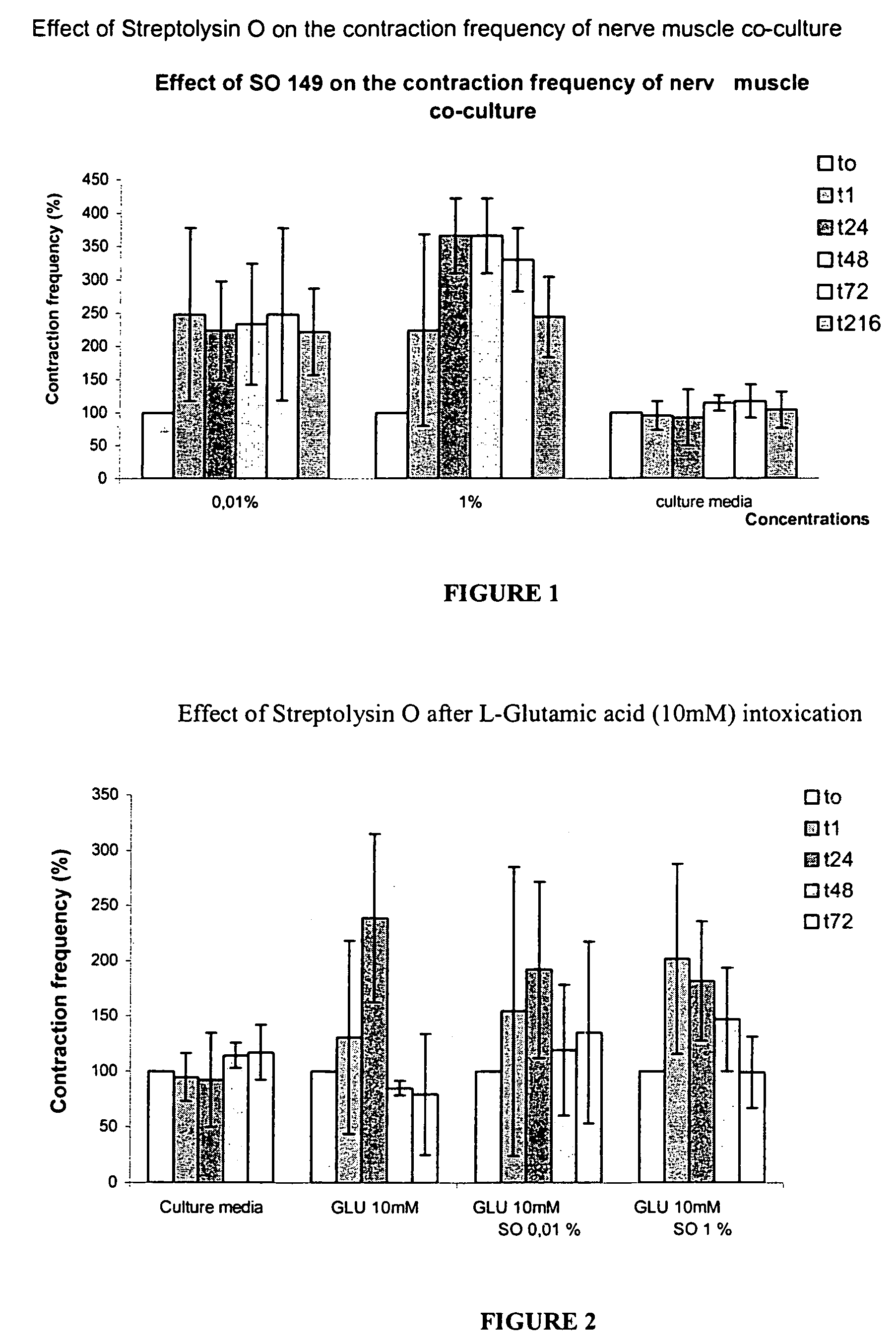Method of treatment of conditions by administration of streptolysin O
a streptolysin and treatment method technology, applied in the direction of antibody medical ingredients, peptide/protein ingredients, metabolic disorders, etc., can solve the problems of limiting blood flow, thrombosis or intima in the arterial wall, and affecting the ability of people to perform physical and sexual activities,
- Summary
- Abstract
- Description
- Claims
- Application Information
AI Technical Summary
Benefits of technology
Problems solved by technology
Method used
Image
Examples
example 1
[0043]An 85-year old female patient suffered from calf pain due to peripheral arterial disease. She began treatment with one drop (2 units / 0.05 ml) of streptolysin O two to four times daily by sublingual administration. Before treatment, she could only walk three minutes without experiencing pain in her calf. With treatment, she has been able to walk nine minutes without pain in her calf.
example 2
[0044]An 80-year old female patient suffered from lower extremity pain due to peripheral arterial disease on her right side. She began a treatment regimen of one drop (2 units / 0.05 ml) of streptolysin O four times daily by sublingual administration. With this treatment regimen, her pain has been relieved.
example 3
[0045]A 72-year old male was diagnosed with lower leg pain due to peripheral arterial disease by his physician. He began treatment with streptolysin O at a rate and amount of one (2 units / 0.05 ml) drop, four times daily by sublingual administration. The treatment regimen has significantly decreased the leg pain and further improved his energy, ability to work, and improved his overall quality of life.
PUM
| Property | Measurement | Unit |
|---|---|---|
| strength | aaaaa | aaaaa |
| physical | aaaaa | aaaaa |
| elastic | aaaaa | aaaaa |
Abstract
Description
Claims
Application Information
 Login to View More
Login to View More - R&D
- Intellectual Property
- Life Sciences
- Materials
- Tech Scout
- Unparalleled Data Quality
- Higher Quality Content
- 60% Fewer Hallucinations
Browse by: Latest US Patents, China's latest patents, Technical Efficacy Thesaurus, Application Domain, Technology Topic, Popular Technical Reports.
© 2025 PatSnap. All rights reserved.Legal|Privacy policy|Modern Slavery Act Transparency Statement|Sitemap|About US| Contact US: help@patsnap.com

